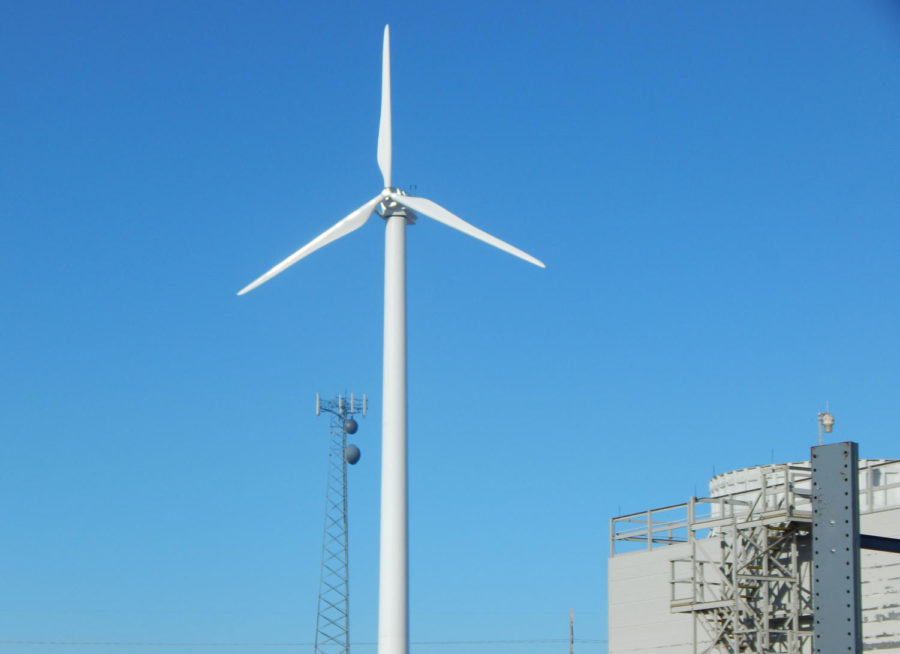Iowa State takes another step toward clean energy
Ames Mayor John Haila proclaimed Aug. 11-17 “American Wind Week” Tuesday. The week will serve to raise awareness on the benefits wind energy brings to Iowa.
March 1, 2016
From whale oil to natural gas, sources of energy have evolved greatly, but scientists are still searching for a clean source of fuel.
It turns out the secret may have been found at Iowa State. Researchers in the chemistry department have been hard at work developing a more cost-effective way of enabling widespread use of hydrogen fuel cells.
The use of hydrogen would require the creation of a chemical that people have yet to produce efficiently. That is where Javier Vela-Becerra, associate professor of chemistry, and his research team stepped in.
“The main purpose of my lab is to come up with ways to make things that have not been made before or that people do not know how to make,” Vela said.
Vela and his team work on several projects, but they have recently developed an alternative solution for a hydrogen generation catalyst, which is a substance that increases the rate of a chemical reaction. Such a discovery opens the door for a hydrogen economy.
From gasoline to coal to natural gases, the mainstream sources of energy all have one nasty side effect: they pump carbon dioxide into the air. When hydrogen is burned, however, the only byproduct is harmless water. Using hydrogen as a fuel is complicated, though, and these complications have kept hydrogen fuel in the realm of science fiction.
When hydrogen is burned, the result is uncontrollably explosive, Vela said. The tricky part about using hydrogen as a source of fuel is finding a way to burn it in a smooth and controlled way. This is where fuel cells make their entrance.
Fuel cells use special catalysts to enable the controlled burning of hydrogen, but these catalysts have so far been rare and expensive noble metals such as platinum, Vela said. As long as these were the only hydrogen generation catalysts available, using hydrogen as a clean source of energy was a distant dream.
“Even if we had all the money in the world, we would not be able to have a fuel cell made out of noble metal in every car because there isn’t enough noble metal in the world,” Vela said.
Luckily, because of the efforts by Vela and his team, a way to produce a far cheaper catalyst has been developed. They have found a way to create nickel phosphide, a cheap hydrogen generation catalyst, and are already sharing their findings with their colleagues.
“We have published a paper on the synthesis of nickel phosphide,” said Himashi Andaraarachchi, graduate assistant in Vela’s research lab.
Any chemist can create the catalyst with the aid of the paper. With an inexpensive catalyst available, experiments in the vast realm of hydrogen chemistry are more possible than ever before. There is still a lot of work to be done, but it seems like our energy sources are headed in the right direction.
“Ideally, 20 years from now, not only is Iowa getting a third of its energy from wind, but we’re powering cars with hydrogen, thanks to these new catalysts Vela said. “We’re burning hydrogen, and the only thing coming out the exhaust is water.”

















